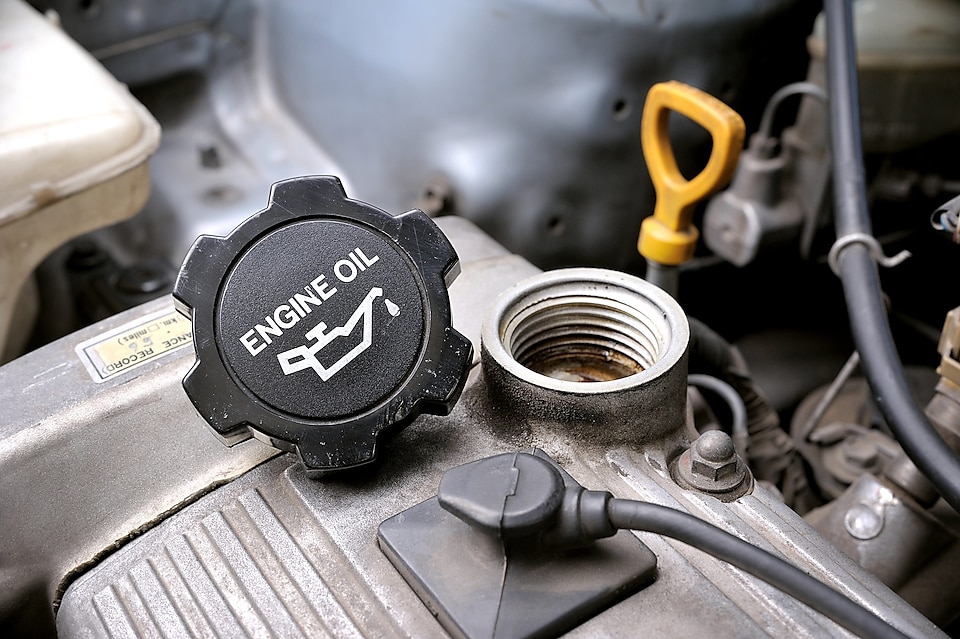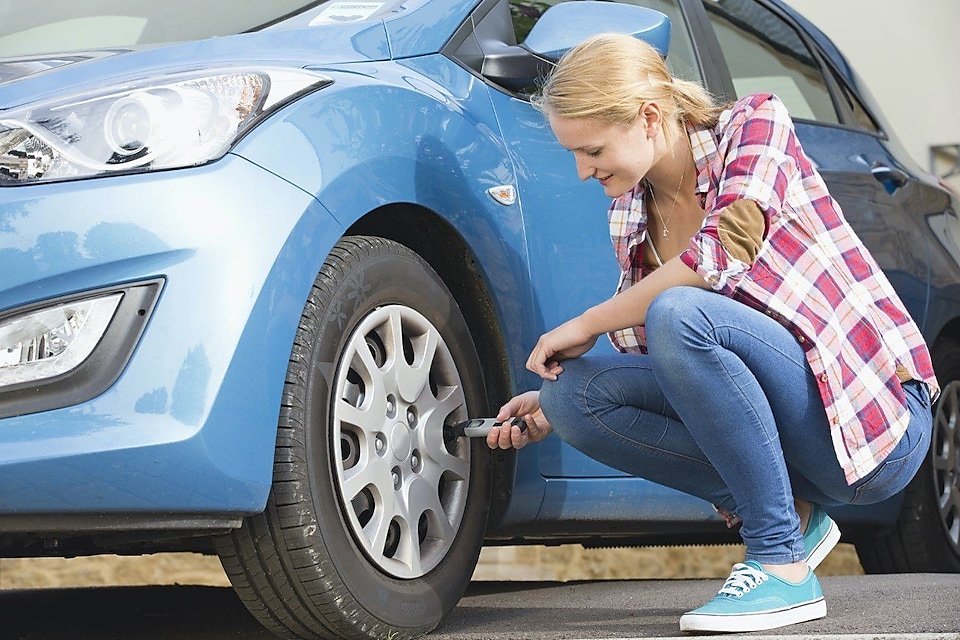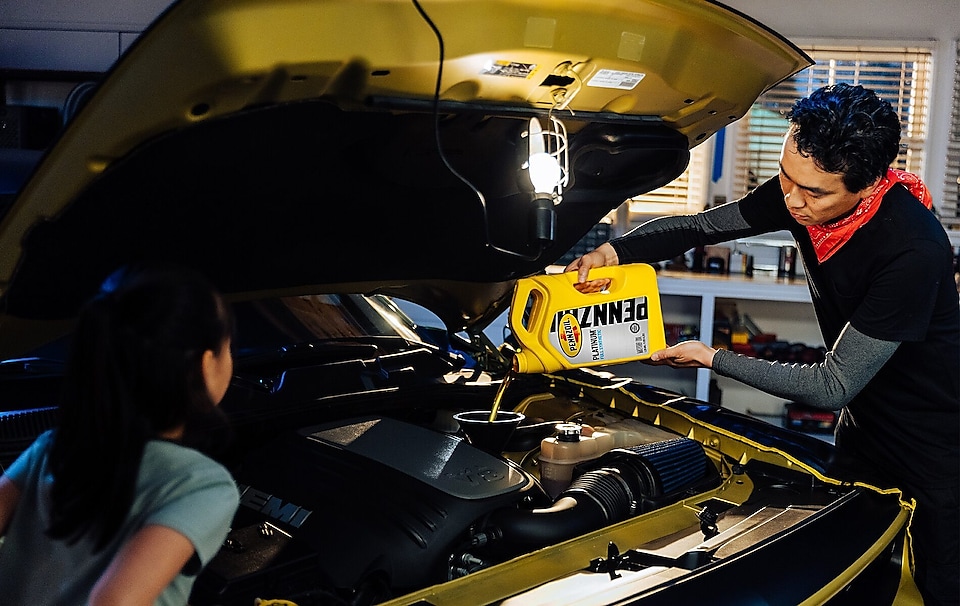Spring Your Vehicle Into Warm Weather During National Car Care Month
National Car Care Month is here! Winter weather can wreak havoc on vehicles both internally and externally which is why it’s critical to give your vehicle proper attention and maintenance at the change of seasons.
Below are four simple maintenance tasks that you can complete yourself to ensure your vehicle is prepped and ready to hit the road as you leave winter in the rearview. If you notice any issues or have concerns with your vehicle, be sure to schedule an appointment with your local service center. To find a location in your area visit our location finder.
1. Check your vehicle’s motor oil – Pennzoil® offers different motor oils for different vehicle makes and models. Be sure to use our motor oil selector to find which type and viscosity grade is right for your vehicle. Not having the proper oil level can lead to important engine parts being exposed and the risk of heat damage and corrosion. To kick off travel season, Pennzoil is offering a new promotion! You can receive $50 in hotel savings when you purchase Pennzoil Platinum Full Synthetic motor oil between April 1, 2021 – September 30, 2021. Full details can be found at Pennzoil.com/Rewards.
Follow these simple steps to check your vehicle’s motor oil level:
- Park your car on leveled ground with the engine off and the parking brake on – lift your hood
- Locate the dipstick, which is a small colored handle with a motor oil symbol
- Pull the dipstick out of the tube and wipe off motor oil with a shoprag
- Put the dipstick back into the tube and be sure to fully insert it back into the engine
- Withdraw the dipstick again and look closely at the tip of the dipstick to read your motor oil level:
- At the tip of the dipstick there are two lines
- The lower line of the dipstick indicates that the motor oil level is low
- The upper line indicates that the motor oil is full
- If the level is anywhere in between the two lines, your vehicle has enough motor oil. If it's low, make sure to add motor oil (in the correct viscosity recommended by your vehicle manufacturer) or bring your vehicle to a local service center to be checked by a professional

Check your vehicle’s motor oil
2. Check the pressure in all of your vehicle’s tires – Modern vehicles have tire pressure monitoring systems built into the vehicle, but it’s always safe to manually check your tires when the seasons change since tire pressure can fluctuate with temperature changes. Before proceeding with the steps below, purchase a tire pressure gauge and store it in your glove box for future use. It’s important to check your tire pressure because if the pressure is too low, you run the risk of getting a flat tire which could leave you stranded or create more drag, causing loss of fuel efficiency.
Follow these simple steps to check your vehicle’s tire pressure levels:
- Begin by finding the tire pressure placard within the door jam. This is typically located on the driver’s side door or within your vehicle’s owner’s manual
- Gently unscrew the cap on the valve stem of your first tire
- Be sure to store the cap in a safe place while you check the tire pressure
- Push the tire gauge against the valve stem and as soon as the dial moves remove the tire gauge
- Read the tire gauge to see if it matches the correct tire pressure for your vehicle. If the pressure is low, use an air compressor (typically located at gas stations and service centers) to fill the tire or contact your local service center to be checked by a professional

Check the pressure in all of your vehicle’s tires
3. Check your lights – It’s important to check all your lights including turn signals to ensure that they are working properly in order to protect both yourself and fellow motorists. If your lights are not functioning properly, it can lead to impaired visibility which is one of the leading cause of accidents.
Follow these simple steps to check your vehicle’s lights:
- For all steps, turn on your vehicle and ensure your vehicle is in park:
- Check your headlights – turn on your headlights then exit the vehicle to visually check that both headlights are properly illuminated. Also turn on your high beam to ensure both are functioning. Remember, do not use high beams within the city, rain, or fog, it can distract other drivers and hinder your visibility.
- Check your fog lights – turn on your fog lights then exit the vehicle to visually check that both fog lights are equally illuminated
- Check your hazard lights – press the button on your dashboard that is shaped like a triangle to turn your hazard lights on. Step out of your vehicle to make sure that the lights are blinking on both sides of your vehicle
- Check your taillights – enlist the help of a friend for this one! Tap on the breaks and have a friend make sure that both lights located at the rear of your vehicle are properly illuminated
- Check your turn signals – activate your left turn signal and check the signal within your dashboard is functioning. Then exit the vehicle and visually check that the left turn signal is properly blinking in the front and rear of the vehicle. Repeat these steps for the right side

Check your lights
4. Check/Replace your wiper blades: It’s important to ensure that your wiper blades are still working effectively after clearing heavy snow and rain from the winter months. If your wiper blades are frayed, ripped, or are leaving streaks on your windshield it is critical for your safety to change them. You can follow our simple steps below to change the wiper blades yourself, or visit your local service center to have a professional change them for you.
Follow these simple steps to check the wiper blades of your vehicle and replace them if necessary:
- Turn on your wiper blades, then listen and look at how your wiper blades clean your windshield
- If they are loud, rough or not properly cleaning the windshield, it’s time to replace the wiper blades
- How to replace the wiper blades:
- Remove the old wiper blades by pulling up on a clip on top of the wiper blade or pushing down on a small tab on the side of the wiper blade
- Put on the new wiper blades by sliding them on in the opposite way that the old wiper blades came off. When the new wiper blades are properly inserted, you will hear a click
- To make sure the new blades are working, turn them on and test the wiper blades the same way you checked your previous wiper blades in step one

Check/Replace your wiper blades
Following these steps will help your vehicle overcome some of the potential issues that the cold weather can leave behind. These steps are easy and you can do them yourself!

